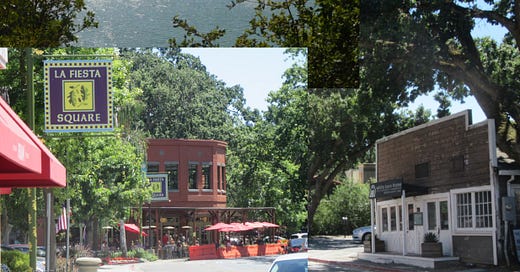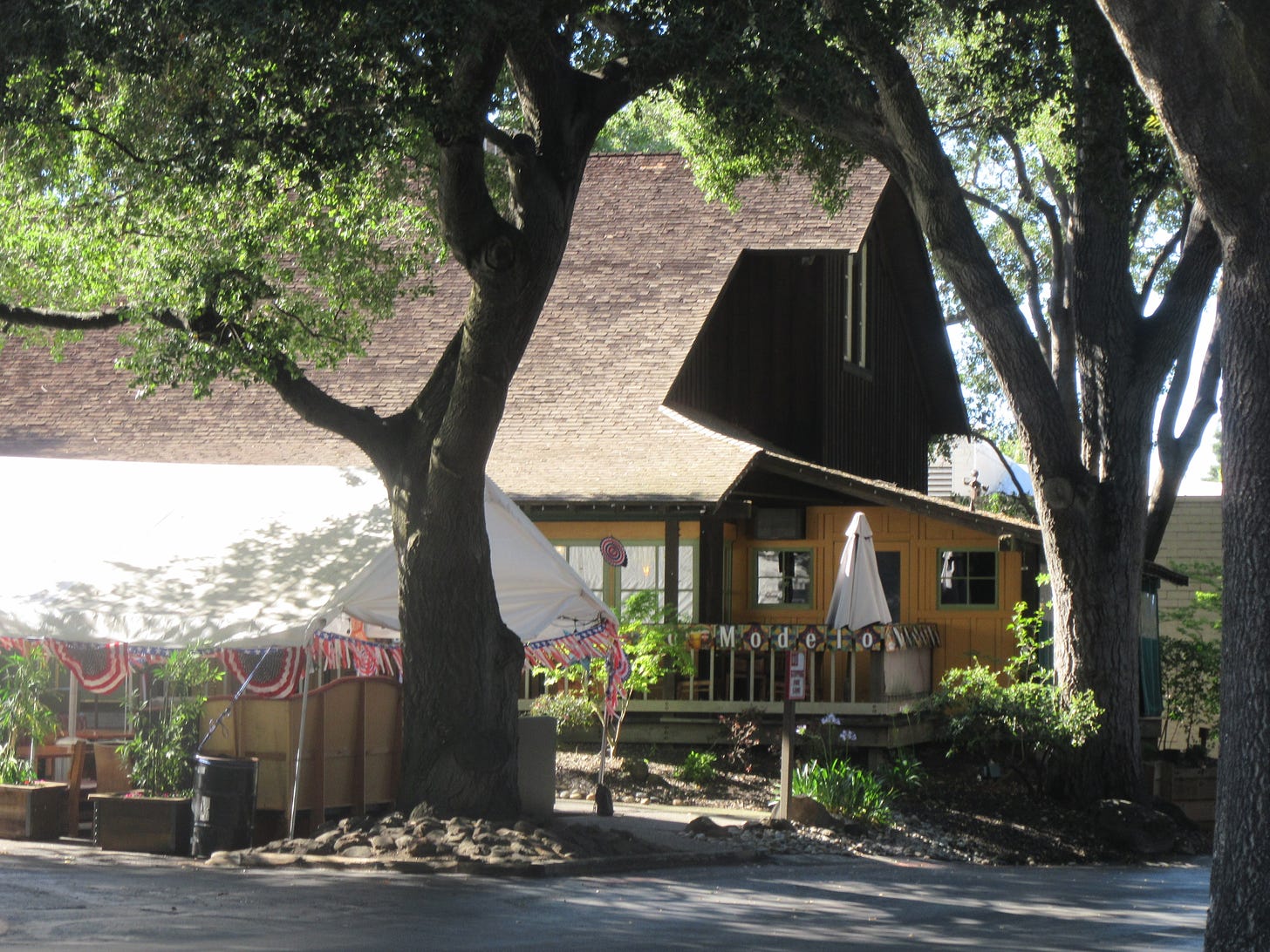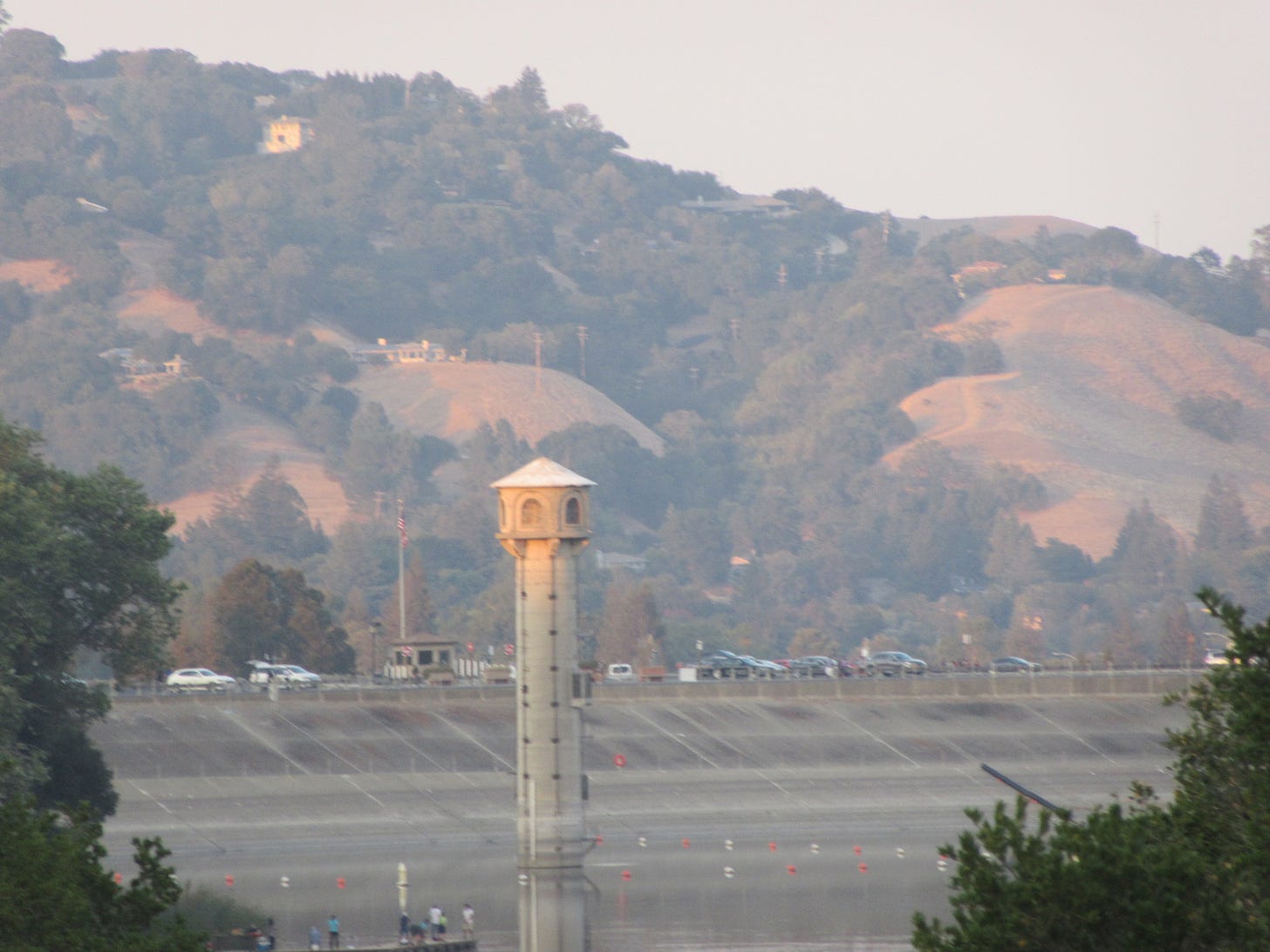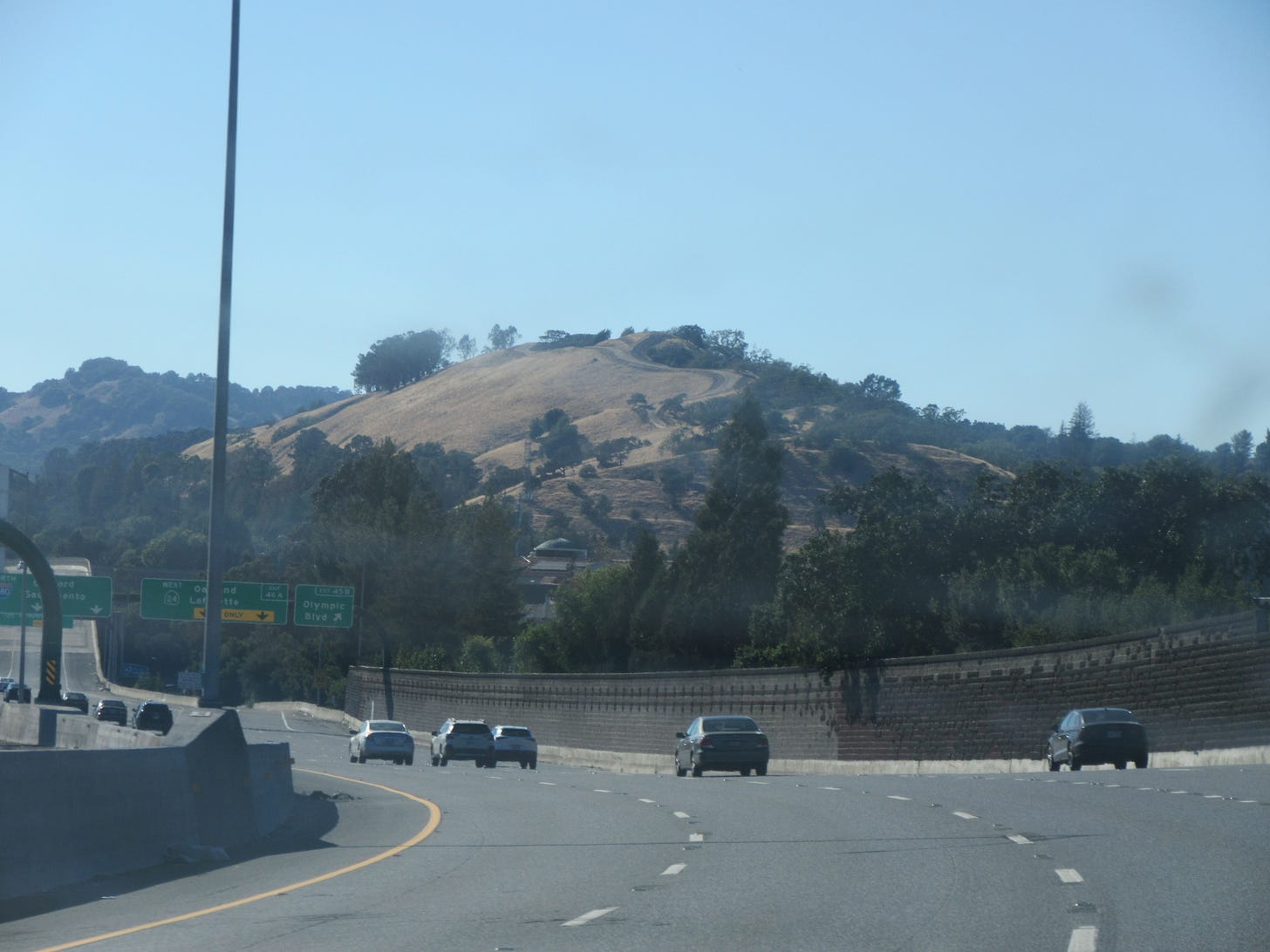YIMBY’s Plan to integrate the East Bay’s White Enclave
Bay Area housing advocate, Kevin Burke, declared that a slate of pro-housing organizations and activists including East Bay for Everyone, Diablo Valley For Everyone, YIMBY Law, and Inclusive Lafayette, “wrote to the Contra Costa County BOS (Board of Supervisors) to ask them to put more of the new housing in the draft housing element in wealthy areas, and less of the new housing next to refineries and toxic waste.” In support of the draft, Bay Area housing advocate, Darrell Owens tweeted that “East Bay yimbys busy enforcing affirmatively furthering fair housing as counties and cities already start to violate them.”
Eastbay For Everyone announced their plans for 2022 that include continuing to audit “Housing Elements, poring over maps and ensuring that wealthy cities and counties are preparing to meet their housing goals,” and to review and comment “on draft housing elements with the Campaign for Fair Housing Elements throughout the East Bay, especially in high-resource suburbs like Pleasanton, Danville, Lafayette, Orinda and Pleasant Hill.” The Campaign for Fair Housing Elements’ “mission is to ensure that communities across California adopt equitable housing policies as part of the 6th RHNA cycle. To undo decades of exclusionary housing policies, California needs a statewide coalition dedicated to tracking the Housing Element process and using this powerful opportunity to undo systemic racism embedded in our laws.”
Contra Costa County’s current zoning plan is focused disproportionately on up-zoning lower income communities. Kevin Burke points out that “the current and proposed zoning changes for North Richmond, a low-income community with poor air quality and toxic soil. Single family lots are rezoned for MFH and mixed use Compare with Alamo, a wealthy community with good air quality and good schools.” Eastbay For Everyone’s letter to the Contra Costa County Supervisors also includes suggestions for where to build walkable mixed-use developments in more affluent communities.
Municipalities are required by the State of California to meet RHNA mandates for affordable housing. Not only are YIMBYs putting pressure on Bay Area cities to meet these mandates but are adamant in linking the failure to increase the housing supply with a failure to meet Fair Housing. The Fair Housing Act prohibits racial discrimination in housing but is controversial as far as it inhibits freedom of association. YIMBYs fancy themselves as the new Integrationists with the organization California YIMBY endorsing AB 686 (2018, Santiago) which “Codifies Obama’s Affirmatively Furthering Fair Housing Rule before Trump repealed them,” and would grant the State of California more tools to integrate institutions and communities and target those that are deemed too segregated.
Certainly there is a push from the YIMBY-left to integrate affluent White suburban communities. For instance Kevin Burke said “I’m very aware of how white Alamo is and want to integrate it. I’m also aware that the NIMBY’s in Alamo are very scared of Wiener because he keeps proposing bills that will make it legal to build cheaper housing there.”
The area that the YIMBYs would like to see “integrated” is Central Contra Costa, an affluent subregion made up of the cities of Orinda, Lafayette, Moraga, Danville, Clayton, Walnut Creek, and Pleasant Hill, and the unincorporated community of Alamo. This area is one of the Bay Area’s Whitest subregions, is more politically moderate compared to the rest of the Bay Area, has a history of being a White flight zone, and includes some of the Whitest school districts within a major metro in California. An East Bay Times article about a diversity summit to address racism at an affluent Contra Costa County school district mentions that the school district, Acalanes Union High School District, “is a predominantly white, affluent suburban district in Contra Costa County. Of the students who “enrolled in 2017-18, 64.9 percent were white, 13.7 percent were Asian, 9.9 were percent Hispanic or Latino, and 1.7 percent were African-American.” In contrast, California’s public school enrollment is now at an abysmal 21.7% White.
Central Contra Costa County has been under the YIMBYs’ spotlight since 2016, when housing activist Sonja Trauss targeted the City of Lafayette’s opposition to a development. Trauss’ organization, Bay Area Renters’ Federation filed a lawsuit claiming “discrimination, saying apartment residents tend to be "more ethnically diverse than the existing population" of Lafayette." So the failure to put in apartments will "disproportionately affect racial minorities."
Inspired by the George Floyd protests,” The YIMBY organization Inclusive Lafayette was founded by Jeremy and Benji Levine who “recognized that they grew up in an exceptionally white, wealthy area (Lafayette) with a limited supply of affordable housing.” Inclusive Lafayette’s Mission Statement is that “We strive to help create a community where people of all backgrounds can afford to live by combatting the legacy of racism in Lafayette, the Bay Area, and the United States as a whole.” Inclusive Lafayette’s objective is to “Base all our work in anti-racism by changing current housing policies that limit the supply of high-quality affordable housing — a shortage that disproportionately affects marginalized groups, particularly BIPOC communities. Promote anti-racism throughout the community.” Inclusive Lafayette points out that “Many of our housing covenants featured explicitly racist restrictions that were designed to keep our community white. After the Fair Housing Act was passed in 1968, we incorporated as a city and passed restrictive building codes and zoning to prevent additional development. Today, Lafayette is one of the most racially segregated and least diverse cities in the Bay Area. In order to effectively promote racial equality and diversity in Lafayette, we must address the root causes behind its segregation.”
While the Bay Area needs to dramatically increase its housing supply, it does seem that YIMBYs are disproportionately focused on areas that are majority White, rather than which areas can accommodate the most new housing. While the Bay Area has vast disparities in jobs to housing, Central Contra Costa County actually has one of the lowest jobs to housing disparities, especially in contrast with the Silicon Valley and the Peninsula. Taking into account geography, jobs, and infrastructure, the areas that can accommodate the most new development are generally in the inner core of the Bay Area. This includes the Silicon Valley, the Peninsula, and the Inner East Bay, areas that are already very diverse. To be fair YIMBYs have also pushed for up-zoning the affluent but majority non-White Silicon Valley city of Cupertino.
There are parallels between leftwing anti-gentrification activists’ concerns that new development could displace lower income communities of color and upper middle class White suburban NIMBYs’ concerns that denser development could transform their communities demographically. What YIMBYs get right is that single family zoning has led to zero-sum competition over housing which causes demographic displacement. However, the YIMBY Left will acknowledge the grievances of anti-gentrification BIPOC activists as legitimate while dismissing any White concerns about demographic displacement as racist.
The BIPOC population is modest in Central Contra Costa County but there has been significant growth in the Asian population. Asians have made up a majority of the Bay Area’s tech workforce since 2010 and even in Lafayette, Asians are on average wealthier than the more established White residents. I expect to see an increased growth of the Asian population in White parts of the Bay Area, especially if Silicon Valley agrees upon a hybrid model for remote work and there isn’t another dotcom bubble burst, which does seem likely. In terms of future demographic trends, zoning reform will diversify White communities but can also help maintain the White population numerically.
I don’t expect the new lot split bill, SB9, to have as dramatic of impact as the NIMBYs had feared, nor produce the dramatic increase in the supply of affordable housing that the YIMBYs had hoped for. I do expect to see empty nesters in ageing White affluent communities to subdivide their lots to create new units. SB9’s clause that grants homeowners the power to be homebuilders means that new residents are more likely to be relatives or of a similar demographic background. SB9 could help build up close knit communities by helping people stay where they grew up and maintain families. I don’t expect SB9 to dramatically change the demographics of communities, but it has the potential to help ease White demographic decline.
The broader push to “diversify” White communities, such as Inclusive Lafayette’s point that “The current demographic makeup—racial, socioeconomic, and otherwise—of Lafayette exists because of institutional racism that has historically been closely linked to housing and development policies,” is very much based upon the majoritarian framework of American History. However, the integrationist narrative is out of touch with the reality of a place as diverse as the Bay Area, that functions as a quilt-like patchwork of enclaves or an assortment of de-facto micro-nations. Integration ideology is not true diversity but rather demands assimilation and compliance to mass society, a monoculture, and out of touch centralized institutions.
In a minoritarian pluralist sense, the concept of a Whitetopia--a term used to describe White flight zones—is analogous to an ethnic enclave or ethnoburb, just like an immigrant community. While zoning restrictions have historically been linked to segregation, it is natural for people to seek out communities based upon demographic preferences. The integrationist-YIMBY argument has legitimacy as far as the degree of scarcity. However, if housing scarcity were to be resolved, would it still be a problem if people chose to self-segregate?
An Urbanize LA article on NIMBYism in LA points out that “one of the driving forces behind the ‘slow growth’ movements can be interpreted as an ‘unholy alliance’ between a left-wing opposition to development on anti-capitalistic and anti-gentrification grounds and a right-wing opposition on anti-integration grounds.” Curbed SF reported that in the ultra-liberal NIMBY bastion of Marin County, a local NIMBY blogger made his case against a new development with a photo of an MS-13 gang member in El Salvador handcuffed with tattoos covering his back.”
The YIMBYs have successfully used anti-racist rhetoric to pressure the State to remove barriers to the market in housing, in a sense woke capitalism. While I am a dissident centrist, in that I am skeptical of both capitalism and integrationist ideology, I reluctantly align with YIMBY, despite its flaws. The reason being that YIMBY is the most adapted to the existing framework, that is hypercompetitive economically but integrationist on race. Many of California’s affluent older NIMBYs hypocritically defend the liberal capitalist paradigm while using NIMBYism as a substitute for genuine enclavism, to the detriment of their own progeny. Zoning restrictions slow down demographic change to a degree. However, even with NIMBYism, one is still competing with everyone who can afford to buy in, rather than just one’s own community or ethnic group. California’s Younger Whites are getting squeezed out from both ends; by older White NIMBYs and from the demographic pressure of competing with other groups for jobs and housing.
There are questions about whether demographic groups with the highest growth rates should be under greater pressure to build more. For instance the astronomically high housing costs in majority White communities are impacted by demand from other groups, as the Bay Area’s White population is declining. Communities are pressured to build to meet the demand from outsiders because the existing legal framework prevents communities from being able to build just to meet internal demands, or any kind of favoritism in housing. White areas should build more housing but should not feel pressured to diversify or feel targeted just for being White. It is noted that many White areas that appear privileged on the surface have many younger White residents who have left due to the astronomical costs.
NIMBYs are coming up with creative ways to avoid the new housing mandates. For instance the affluent Bay Area city of Woodside failed at an attempt to designate their town as an enclave for mountain lions to prevent the implementation of SB9. White communities seeking a designated enclave status, similar to that of an immigrant community, seems farfetched. However, affluent White communities that have long been unscathed by integrationist policies are under a lot more aggressive scrutiny, due to woke politics and the extreme degree of inequality. Well off White communities will have to decide upon either embracing total inclusion towards all, regardless of race or class, or embrace more identarian values, based upon ethnicity and culture, rather than economic elitism.
Enclavism is a new paradigm that transcends beyond NIMBY vs. YIMBY. In contrast with NIMBYism, which is reactionary, enclavism proposes a progressive and utopian vision where all groups are free to be able to live in the kind of society that fits their needs and desires. Enclavism could be the state granting demographic groups and areas some degree of autonomy. That would require a total political paradigm shift, such as the state passing a neighborhood freedom amendment, which would override Fair Housing. However, enclavism is not segregation but is rather flexible in that an enclave might cater to one particular group, while not necessarily excluding others from its community. For instance many communities are stimulatingly enclaves for a particular ethnic group while still being diverse. The social benefits to enclavism include social capital, economic opportunities through networking, building intergenerational wealth, and serving as a break on capitalism by easing the cutthroat competition of mass society.
Enclavism starts with promoting the identity of an area. For instance developments geared towards an ethnic or cultural community, such as shopping and housing complexes, recreational amenities, and community centers. Many immigrant enclaves got their start because an entrepreneur created a development to cater to their particular community. These projects helped their communities grow and flourish by attracting more businesses and residents. The aesthetic component is crucial, as people select areas because of certain aesthetic preferences, which is a form of tribalism. Many White communities in California already have a quasi-European or Americana aesthetic. I could envision proposed projects that further build upon Eurocentric aesthetics, similar to how immigrant communities are often defined by their architecture and signage.
A major motivation behind NIMBY is preserving the aesthetic character of a community, such as the semi-rural trope. Many of these affluent suburban communities do have natural and architectural attributes that make them desirable. The appeal of desirable Bay Area suburbs, such as Lafayette, is that they have aspects of small towns, access to nature with extensive networks of greenbelts, but are also accessible to dense and dynamic urban areas. This model of being able to access the best of both words is desirable if one can afford it but YIMBYs generally view it as selfish and unsustainable.
There is this false dichotomy that the only options are between maintaining lower density suburbia with semi-rural characteristics or transforming areas that have charm and tranquility into rows of banal stucco boxy apartments, devoid of any greenery. YIMBYs can be too utilitarian and productionist but it is possible to dramatically increase the supply of housing and build communities that are aesthetically pleasing and have a high quality of life. I am not opposed to development in aesthetically pleasing suburbs but retrofitting them into denser communities takes a degree of care.
It is a shame that some of the best New Urbanist developments, that are charming but also fairly compact, are actually exurban subdivisions on greenbelts rather than infill. One such project is the Tudor village themed development in the suburbs of Atlanta, Swann Ridge by Rhinehart-Pulliam. We should encourage high quality infill development but zoning restrictions have made it impossible to retrofit suburbs into that village model, that is walkable, aesthetically pleasing and high in social cohesion. This explains the false dichotomy between single family housing and bland boxy apartment buildings. Protecting greenbelts and historic preservation concerns are also relevant.
Enclavism can help reconcile the aesthetic concerns with demand and come up with better urban models. If developments are tailored to a community rather than just to meet supply and profit, the quality and aesthetics will reflect that. There is potential to increase supply while respecting the traits that make a community desirable. Urban planning and zoning reflect political paradigms and enclavism could lead to a wider range of, and more dynamic urban models. YIMBY policies can also be used as a tool to build up enclaves.







